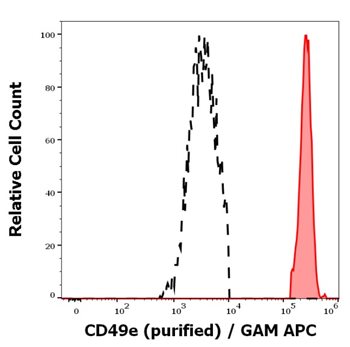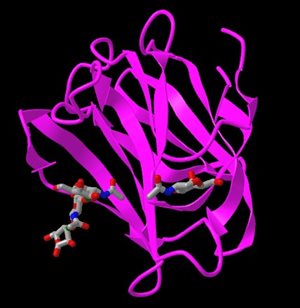
Search our suppliers catalog
Exbio
Exbio

News about Exbio
| Three new antibody clones |
| Anti-Hu CD37 (clone MB-1) |
| MB-1 is a mouse monoclonal antibody, which recognizes an extracellular epitope of CD37, and is suitable for flow cytometry, immunoprecipitation, and immunohistochemistry. CD37 is a 40-64 kDa tetraspanin family glycoprotein, which forms complexes in the B cell membrane with MHC class II, CD53, CD81, and CD82. It is expressed highly on mature B cells and neoplastic B cells, but it is lost on plasma cells, as well as on pro-B cells. Lower expression was detected on monocytes, macrophages, and dendritic cells. Fig. 1: Flow cytometry multicolor surface staining of human lymphocytes stained using anti-human CD37 (MB-1) purified antibody (concentration in sample 0.2 μg/ml, GAM APC) and anti-human CD19 (LT19) PE antibody (20 μl reagent / 100 μl of peripheral whole blood). Currently available formats: Purified 11-923-C100 Coming soon: PE 1P-923-T100 |
 |
| Anti-Hu CD49e (clone SAM1) |
| SAM1 is a mouse monoclonal antibody, which recognizes an extracellular epitope of CD49e, and is suitable for flow cytometry, immunoprecipitation, immunohistochemistry, and functional applications. CD49e (VLA5 alpha) is a type I transmembrane glycoprotein of the integrin alpha subclass (intergrin 5 alpha), expressed on thymocytes, early and activated B cells, monocytes, NK cells, dendritic cells, osteoblast and endothelial cells. It binds to RGD sequence in fibronectin and to neural adhesion molecule L1. CD49e interactions are important for maintaining the integrity of the endothelial monolayer, as well as it is involved in monocyte migration, T cell costimulation, regulation of cell survival, and other. Fig. 2: Separation of human CD49e positive monocytes (red-filled) from human CD49e negative lymphocytes (black-dashed) in flow cytometry analysis (surface staining) of peripheral whole blood stained using anti-human CD49e (SAM1) purified antibody (concentration in sample 1.7 μg/ml, GAM APC). Currently available formats: Purified 11-914-C100 |
 |
| Anti-Hu Galectin-9 (9M3-1) |
| 9M1-3 is a rat monoclonal antibody, which recognizes an epitope within C terminus of human galectin-9, and is suitable for flow cytometry, immunohistochemistry, and functional applications. Galectin-9 is a glycan-binding protein, which is expressed in three main isoforms of 49 aa, 27 aa, and 15 aa. It can be detected on the cell surface, as well as intracellularly, or in a secreted form. On the cell surface, galectin-9 plays roles in contacts with other cells and with extracellular matrix. It is expressed on multiple cell types, but mainly on Treg cells, activated Th cells and some cancers. Its secreted form acts like a cytokine with immunomodulatory and immunosuppresive functions. Massive and inadequate production of galectin-9, associated with some viral infections or cancers, can counteract immune reactions to these illnesses. High levels of galectin-9 expression lead to poor prognosis of cancer patients. Fig. 3: Crystal structure of human galectin-9 N-terminal CRD in complex with Forssman pentasaccharide. Cited from: www.ncbi.nlm.nih.gov/Structure/mmdb/mmdbsrv.cgi?uid=2eal Currently available formats: Purified 11-928-C100 |
 |
Info Exbio
Monoclonal antibodies and reagents for multi-color flow cytometry
EXBIO is the leading manufacturer of monoclonal antibodies and reagents for research and clinical applications with the focus on multi-color flow cytometry analysis of human cellular markers.
The EXBIO portfolio of more than 4 000 off-the-shelf products covers a diverse set of areas including Hematology, Immunology, Cancer, Stem cells, and Cell Biology.
EXBIO is the leading manufacturer of monoclonal antibodies and reagents for research and clinical applications with the focus on multi-color flow cytometry analysis of human cellular markers.
The EXBIO portfolio of more than 4 000 off-the-shelf products covers a diverse set of areas including Hematology, Immunology, Cancer, Stem cells, and Cell Biology.
Currently there are no products of the brand Exbio in our catalog.


